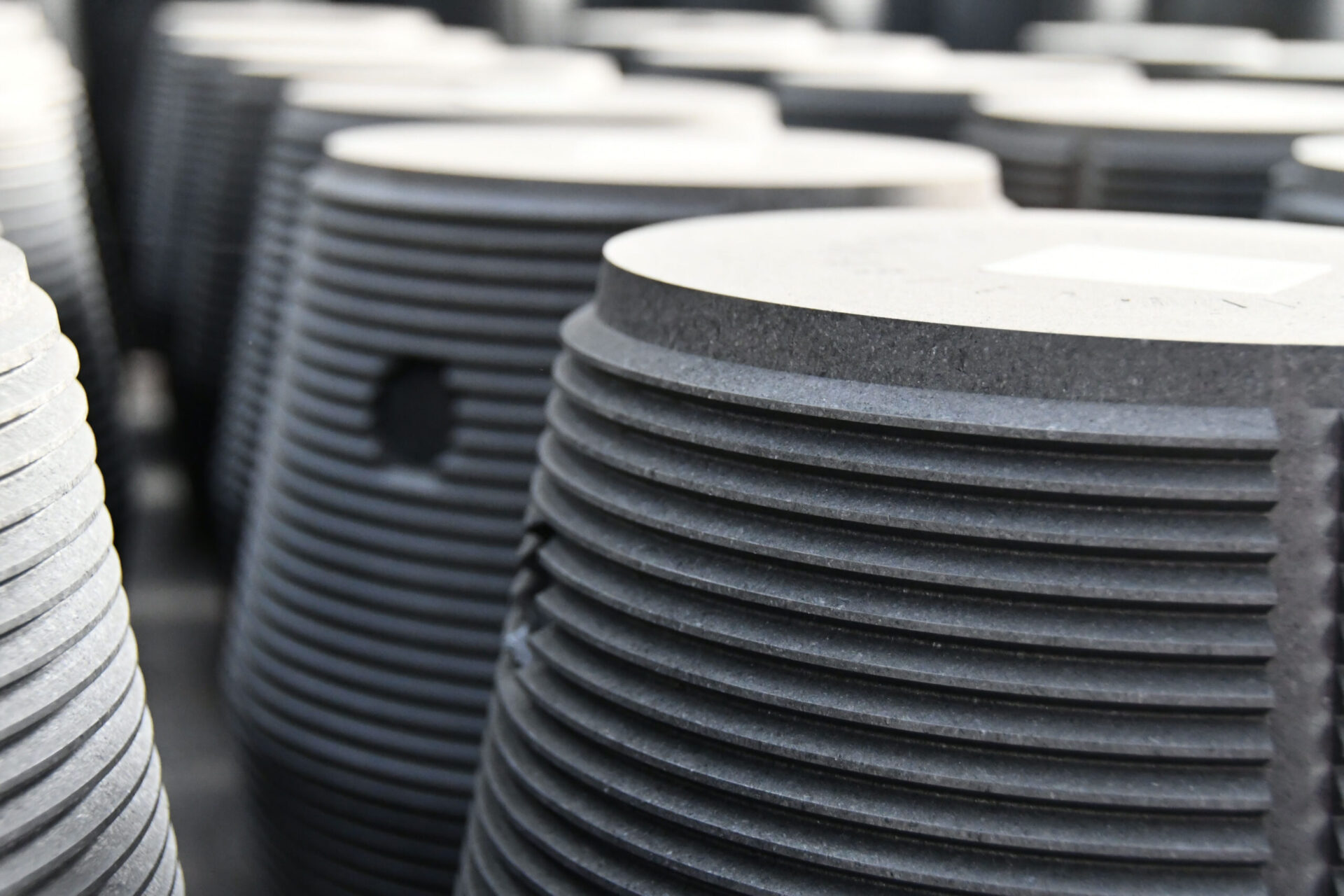
Graphite electrode nipples come in two types: one is cylindrical, and the other is conical. Nowadays, conical nipples with RP, HP and UHP graphite electrodes are mainly used around the world.
Since the cross-sectional area of the graphite electrode nipples are smaller than that of the electrode to which it is connected, the material from which the nipple is produced has a compressive strength greater than that of the electrode to which it is connected and has a lower resistivity.
In EAF stellmaking process, with the burning of the lower graphite electrode, it is necessary to replace and connect new electrodes constantly. The function of the nipple is to complete the connection between the electrodes.
To improve the connection quality of graphite electrodes and prevent the loosening of nipples, dig two grooves on the nipple along the longitudinal cross-cut thread and insert the asphalt pin on the nipple body. During EAF steelmaking, the temperature rises after electrify the graphite electrodes.
Then pitch will melt at a specific temperature. When the bitumen melts, it flows into the gap between the threaded nipple and the groove. As the temperature increases, the bitumen carbonizes. The result is that the threads of the teat and the teat hole are condensed into one piece. So this result reduces the loosening of the teat when graphite electrodes in electric arc furnace steelmaking production.
Unit: mm
|
Nominal Diameter |
International
Code according to IEC |
Nipple |
Middle
Diameter D2/D2 |
Socket |
Thread
pitch |
||
| Large
dia. |
Length | Small
dia. |
Socket
depth |
||||
| 300 | 177T3N | 177.16 | 270.90 | 172.95 | 168.73 | 141.50 | 8.47 |
| 350 | 215 T3N | 215.90 | 304.80 | 211.69 | 207.47 | 158.40 | |
| 400 | 215 T3N | 215.90 | 304.80 | 211.69 | 207.47 | 158.40 | |
| 400 | 241 T3N | 241.30 | 338.70 | 237.09 | 232.87 | 175.30 | |
| 450 | 241 T3N | 241.30 | 338.70 | 237.09 | 232.87 | 175.30 | |
| 450 | 273 T3N | 273.05 | 355.60 | 268.84 | 264.62 | 183.80 | |
| 500 | 273 T3N | 273.05 | 355.60 | 268.84 | 264.62 | 183.80 | |
| 500 | 298 T3N | 298.45 | 372.60 | 294.24 | 290.02 | 192.20 | |
| 550 | 298 T3N | 298.45 | 372.60 | 294.24 | 290.02 | 192.20 | |
| 300 | 177T4N | 177.80 | 215.90 | 176.64 | 171.48 | 114.00 | 6.35 |
| 350 | 203 T4N | 203.20 | 254.00 | 200.04 | 196.88 | 133.00 | |
| 400 | 222 T4N | 222.25 | 304.80 | 219.09 | 215.93 | 158.40 | |
| 400 | 222 T4N | 222.25 | 355.60 | 219.09 | 215.93 | 183.80 | |
| 450 | 241 T4N | 241.30 | 304.80 | 238.14 | 234.98 | 158.40 | |
| 450 | 241 T4N | 241.30 | 355.60 | 238.14 | 234.98 | 183.80 | |
| 500 | 269 T4N | 269.88 | 355.60 | 266.72 | 263.56 | 183.80 | |
| 500 | 269 T4N | 269.88 | 457.20 | 266.72 | 263.56 | 234.60
|
|
| 550 | 298 T4N | 298.45 | 355.60 | 295.29 | 292.13 | 183.80 | |
| 550 | 298 T4N | 298.45 | 457.20 | 295.29 | 292.13 | 234.60 | |
| 600 | 317 T4N | 317.50 | 355.60 | 314.34 | 311.18 | 183.80 | |
| 600 | 317 T4N | 317.50 | 457.20 | 314.34 | 311.18 | 234.60 | |
| 700 | 374 T4N | 374.65 | 457.20 | 371.49 | 368.33 | 234.60 | |
| 700 | 374 T4N | 374.65 | 558.80 | 371.49 | 368.33 | 285.40 | |
Copyright © 2018. JINSUN New Material Technology., LTD All Rights Reserved.